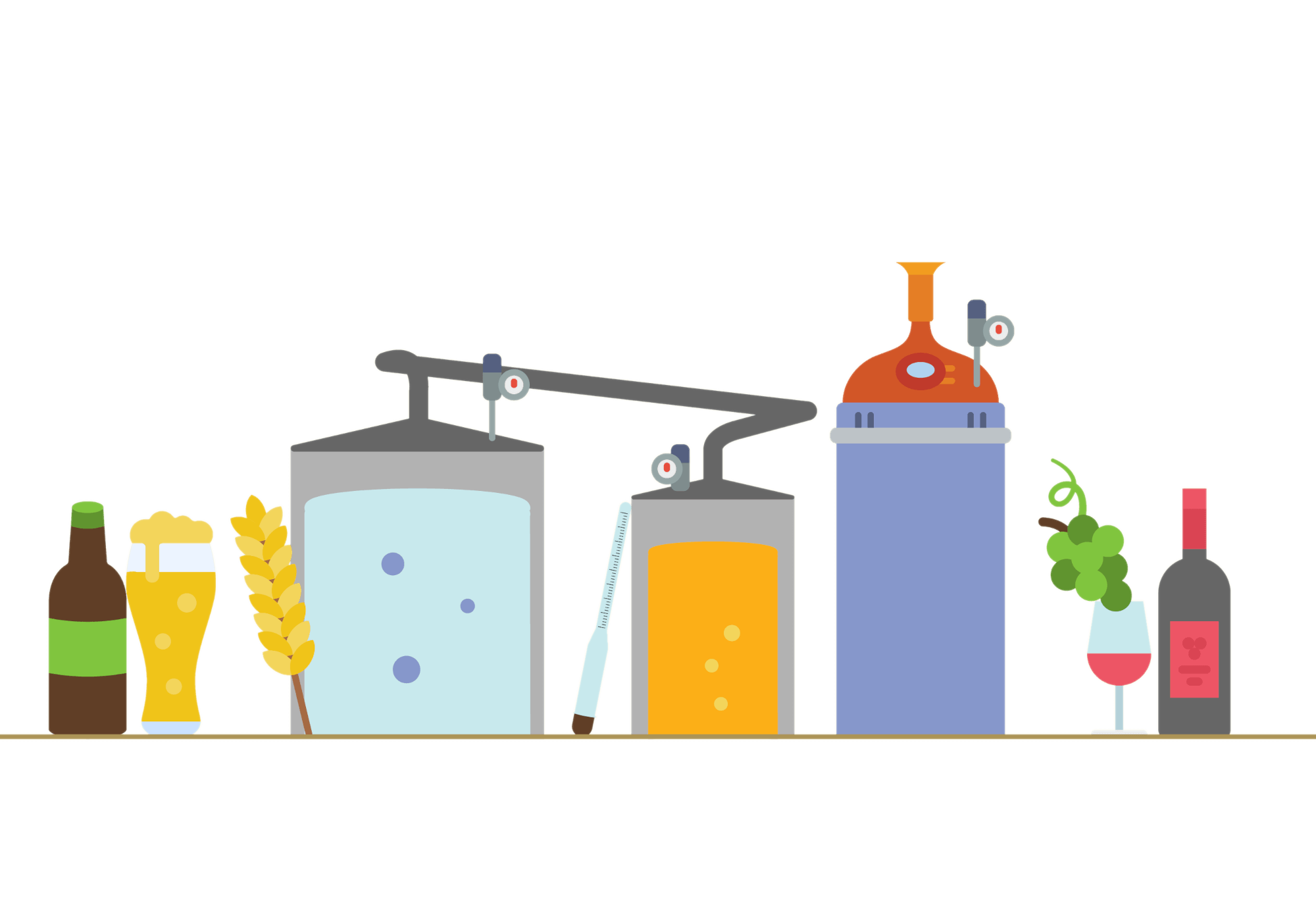The process of proofing alcohol traces back to England in the 1600s, initially aimed at securing state revenue rather than safeguarding consumers. Taxation rates for proof spirits necessitated a reliable method to verify alcohol content. Early approaches involved primitive techniques such as igniting a soaked cannon pellet to assess flammability, indicating a spirit’s proof. However, flaws persisted; mislabeling allowed alcohol to evade higher taxation due to temperature-dependent flammability.
By the 19th century, scientific advancements birthed a more accurate measurement: specific gravity. A test leveraging alcohol’s density against distilled water’s density at specific temperatures emerged, setting the standard for proof determination. Divergent methodologies emerged across nations; while the UK relied on degrees of proof linked to specific gravity, the US simplified proof computation by doubling alcohol by volume (ABV), shaping contrasting standards for proof labeling.
While standards limit the ABV of most alcoholic beverages, exceptions exist. States like California and Nevada restrict the sale of high-ABV drinks. Absinthe, with an ABV of 45–75%, faced prohibition fueled by misconceptions and moral panic.
Despite its infamy and prohibition due to myths about thujone toxicity, absinthe, with negligible thujone levels, reemerged in the US in the early 2000s. Legal standards were met, leading to its reintroduction and the revival of this storied spirit. Absinthe’s allure transcended its reputation; it influenced artistic movements, inspiring luminaries like Oscar Wilde and Ernest Hemingway. Despite its ban, absinthe’s mystique endured, fueling creativity and cultural movements.
The Absinthe revival reexamined historical biases, acknowledging its compliance with safety standards. European imports and American producers ushered in a new era, reintroducing this enigmatic spirit to contemporary drinkers.
Alcohol Content Determination
Determining alcohol content in spirits serves multiple purposes: compliance with labeling regulations, ensuring product quality and facilitating taxation. The recognized method involves measuring density, which can be converted into alcohol concentration through established conversion tables.
Alcohol products are typically labeled with an alcohol Proof, a system initially rooted in the UK. However, in the US, current proof determination involves a simpler approach—multiplying the alcohol percentage by volume (ABV) by 2. For instance, an 80 Proof spirit equates to 40% ABV.
Understanding proof aids consumers and regulators in gauging the potency of alcoholic beverages. In the US, proof signifies double the alcohol by volume percentage, providing a clear indication of ethanol concentration. Higher proof values indicate a stronger ethanol presence in the drink.
Converting alcohol by volume (ABV) into degrees proof involves a straightforward calculation. Multiplying the ABV by 7⁄4 provides the corresponding proof value. For instance, pure 100% alcohol translates to 175 proof, while a spirit containing 40% ABV equals 70 proof.
Legal Frameworks Governing Alcohol Proofing
Alcohol-proofing laws intertwine with taxation regulations, historically linking higher-proof spirits to increased taxes. However, modern laws often mandate accurate proof labeling for taxation purposes, ensuring consistency and transparency in the industry. Government bodies worldwide enforce stringent labeling requirements, dictating how proof values must be displayed on alcoholic beverages. These regulations stipulate the format, font size, and placement of proof information, aiming for clarity and consumer comprehension.
Different countries maintain varying standards for alcohol proofing, leading to divergent methodologies in determining proof values. Harmonization efforts across regions aim to streamline these differences, facilitating global trade and consumer understanding. Agencies such as the Alcohol and Tobacco Tax and Trade Bureau (TTB) in the United States oversee alcohol labeling and proof regulations. Compliance with these standards is mandatory for producers and distributors to ensure market legality.
Alcohol-proof regulations significantly influence production methodologies and international trade. Manufacturers must meticulously measure and maintain alcohol concentrations within specified proof limits to comply with diverse regional laws. Alcohol-proof laws play a pivotal role in consumer protection, ensuring accurate information on beverage potency. These regulations safeguard against misleading claims or false representation, promoting consumer safety and informed choices.
Adhering to stringent proofing laws imposes financial burdens on alcohol producers. Compliance costs, including testing and certification, contribute to production expenses, impacting the industry’s operational dynamics.
Standardization vs. Cultural Variations in Proof Determination
The debate revolves around the balance between standardized proof determination methods and honoring cultural variations. While standardization ensures consistency and global trade facilitation, diverse cultural practices might have unique proofing methods deeply entrenched in tradition. Advocates for standardization emphasize clarity and uniformity, while proponents of cultural variations argue for respecting heritage and preserving authenticity in alcohol production.
Economic Implications of Stringent Proofing Regulations
The economic debate centers on the financial impact of stringent proofing regulations on alcohol producers. Advocates highlight consumer safety and transparency as paramount, justifying the costs associated with compliance. Conversely, critics argue that excessive regulation leads to increased production costs, potentially hindering market competitiveness, and disproportionately affecting smaller producers.
Technological Advancements
The debate focuses on the role of technology in alcohol-proof determination. Supporters emphasize technological advancements’ accuracy and efficiency in measuring proof values, ensuring precision and reliability. Opponents raise concerns about overreliance on technology, fearing potential errors or manipulation, leading to inaccuracies and compromising traditional methods’ authenticity.
Higher Proof vs. Responsible Consumption
The discussion centers on the health implications of higher-proof beverages and responsible alcohol consumption. Proponents of higher proof highlight the concentration of flavors and quality, while opponents argue that higher-proof drinks may lead to increased intoxication and health risks. Advocates for responsible consumption stress moderation regardless of proof levels to mitigate adverse health effects.
Balancing Uniformity and Regional Preferences
The debate surrounds the push for global harmonization of proof determination methods and respecting regional preferences. Advocates of harmonization prioritize streamlined trade and consumer understanding, advocating for standardized proofing methods. Conversely, proponents of regional preferences emphasize cultural diversity and unique traditional practices, resisting homogenization for the sake of heritage preservation.
The Health Risks Of Consuming High-Proof Alcohol
- Consuming high-proof alcohols significantly escalates intoxication due to their elevated ethanol concentrations. The rapid absorption of alcohol into the bloodstream leads to intensified impairment of motor skills, cognitive functions, and judgment. Individuals may experience severe intoxication quicker than with lower-proof beverages, increasing the risk of accidents, injuries, or alcohol poisoning.
- High-proof alcohols pose an increased risk of addiction and dependency due to their potency. The concentrated ethanol content may lead to quicker development of tolerance, prompting individuals to consume larger quantities to achieve the desired effects. This heightened consumption pattern heightens the likelihood of alcohol dependence, exacerbating long-term health risks. Rather than using drinking as a habit to fill your life with, follow these 7 simple healthy habits to start filling your days with.
- Consuming high-proof alcohols can lead to exacerbated gastrointestinal issues and digestive distress. The concentrated ethanol content may irritate the gastrointestinal lining, leading to inflammation, acid reflux, gastritis, and other digestive complications. Prolonged consumption of high-proof beverages can contribute to more severe gastrointestinal disorders.
- The consumption of high-proof alcohol can significantly impact mental health. The intensified effects on the central nervous system may exacerbate mood swings, anxiety, depression, and other mental health conditions. Chronic consumption of high-proof drinks can contribute to the deterioration of mental health and exacerbate existing mental health disorders.
- Regular consumption of high-proof alcohol increases the risk of long-term health consequences. Chronic intake can lead to liver damage, cardiovascular issues, increased risk of certain cancers, and overall deterioration of bodily functions. The concentrated ethanol content in high-proof drinks magnifies the risks associated with excessive alcohol consumption.
Continual advancements in scientific methodologies and consumer trends prompt periodic revisions in proofing laws. The industry adapts to these changes, integrating new technologies to meet evolving regulatory demands. Efforts to standardize proofing methodologies globally persist, aiming for harmonization across borders. These initiatives seek alignment in proof determination processes to facilitate international trade and eliminate discrepancies.
No related posts found.
